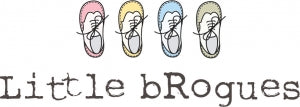How to Choose Your Baby’s First Walking Shoes
Choosing your baby’s first walking shoes is an exciting time and a milestone to be celebrated as they begin to explore the world on their own two feet! Little Brogues is a specialist children’s shoe shop, and we are as excited as you about this first step!
Baby’s First Walking Shoes
There are many things to consider when it comes to choosing your baby’s first walking shoes and the guide below will help point you in the right direction. If you live close enough to one of our stores please pop in for advice, and if you are shopping online you can find our collection of great first walkers shoes here.
Tips on Choosing Baby’s First Walking Shoes
Here are some tips to help you select the right shoes for your baby:
- Wait Until They're Ready: Babies typically start walking between 9 and 18 months. It's best to wait until your baby is confidently taking steps on their own before buying walking shoes. In the early stages, barefoot or soft-soled shoes are often recommended to allow for natural foot development.
- Measure Their Feet: If you can have your baby's feet measured by a professional. You can also measure them at home. Keep in mind that baby's feet grow quickly, so it's essential to measure regularly.
- Choose the Right Size: Select shoes that match your baby's current foot size. Avoid buying shoes that are too big, as they can be challenging for your baby to walk in and may cause tripping.
- Flexible and Lightweight: Look for shoes that are lightweight and flexible. The sole should bend easily at the ball of the foot to allow natural movement.
- Soft Soles for Early Walkers: For babies who are just starting to walk, opt for soft-soled shoes. Soft-soled shoes mimic the feel of being barefoot, allowing your baby to sense the ground beneath them and develop balance.
- Secure Fit: Ensure that the shoes fit snugly but not too tightly. You should be able to fit your pinky finger between your baby's heel and the back of the shoe. The shoe should also have a secure closure mechanism, such as Velcro or elastic laces, to keep it in place.
- Room to Grow: While the shoes should fit well, leave a little room for growth. Babies' feet grow quickly, and you don't want to replace their shoes too frequently.
- Breathable Materials: Choose shoes made from breathable materials like leather or canvas to keep your baby's feet comfortable and reduce the risk of sweating and odours.
- Non-Slip Soles: Look for shoes with non-slip soles to help prevent your baby from slipping as they learn to walk on various surfaces.
- Toe Protection: Opt for shoes with a reinforced toe area to protect your baby's toes as they may stumble and fall while learning to walk.
- Avoid Hand-Me-Downs: While hand-me-downs can be economical, it's best to buy new shoes for your baby. This ensures that the shoes are in good condition and properly sized for your child's feet.
- Consider Foot Shape: Some babies have wider or narrower feet. Be attentive to your baby's foot shape and choose shoes that accommodate their unique shape comfortably.
Natural Development for Baby Shoes
Remember that the focus should be on supporting your baby's natural development rather than fashion or style. Investing in well-fitting, comfortable, and age-appropriate shoes will help your baby transition from crawling to walking with confidence.
